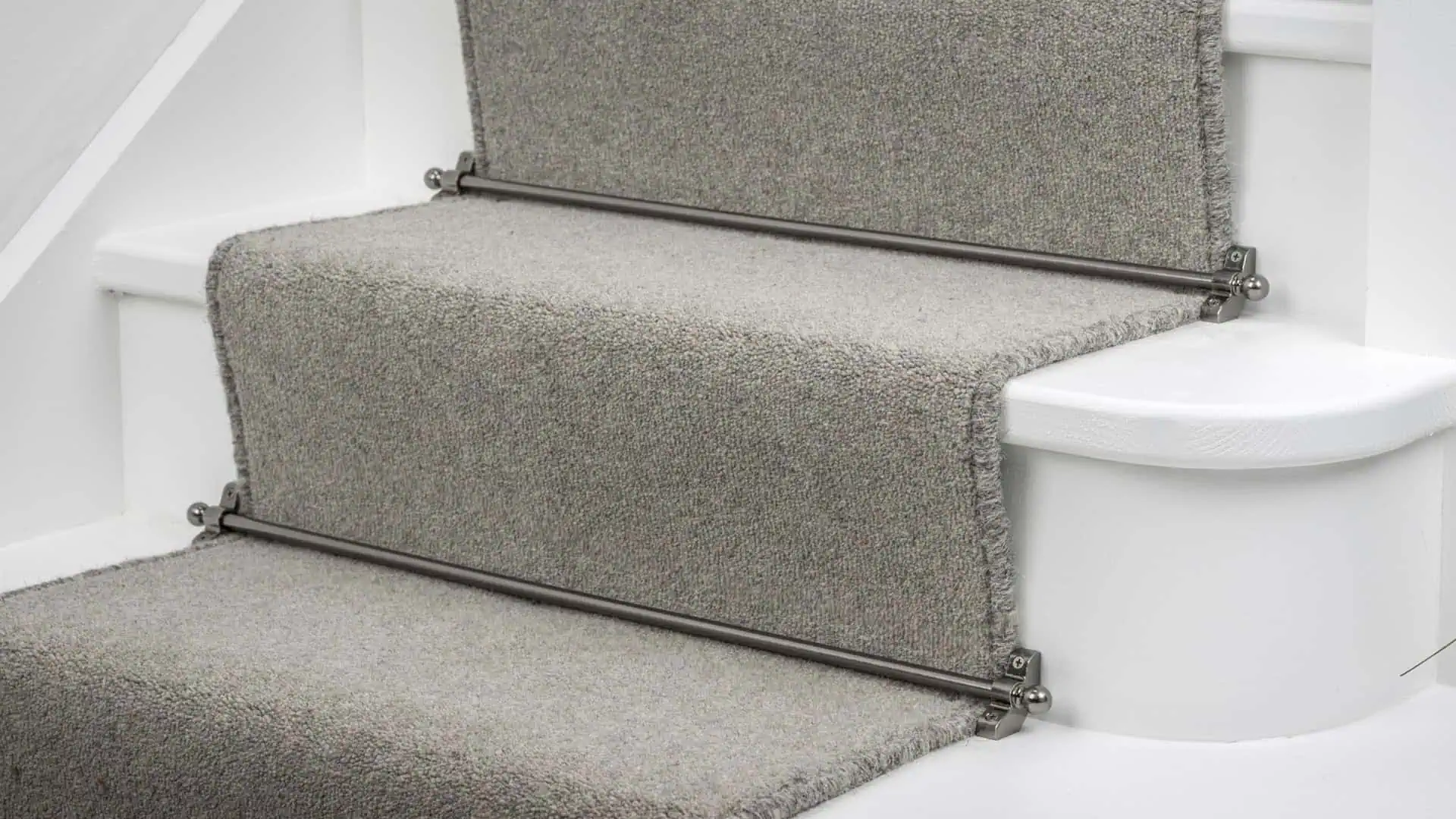Adding decorative stair rods to your carpet runner offers that sophisticated finishing touch. Stair rods don’t just look the part; they can also help your runner last longer.
In this guide, we cover everything you need to know about stair rods, helping you make the right choice for your home.
In this guide
What are stair rods?
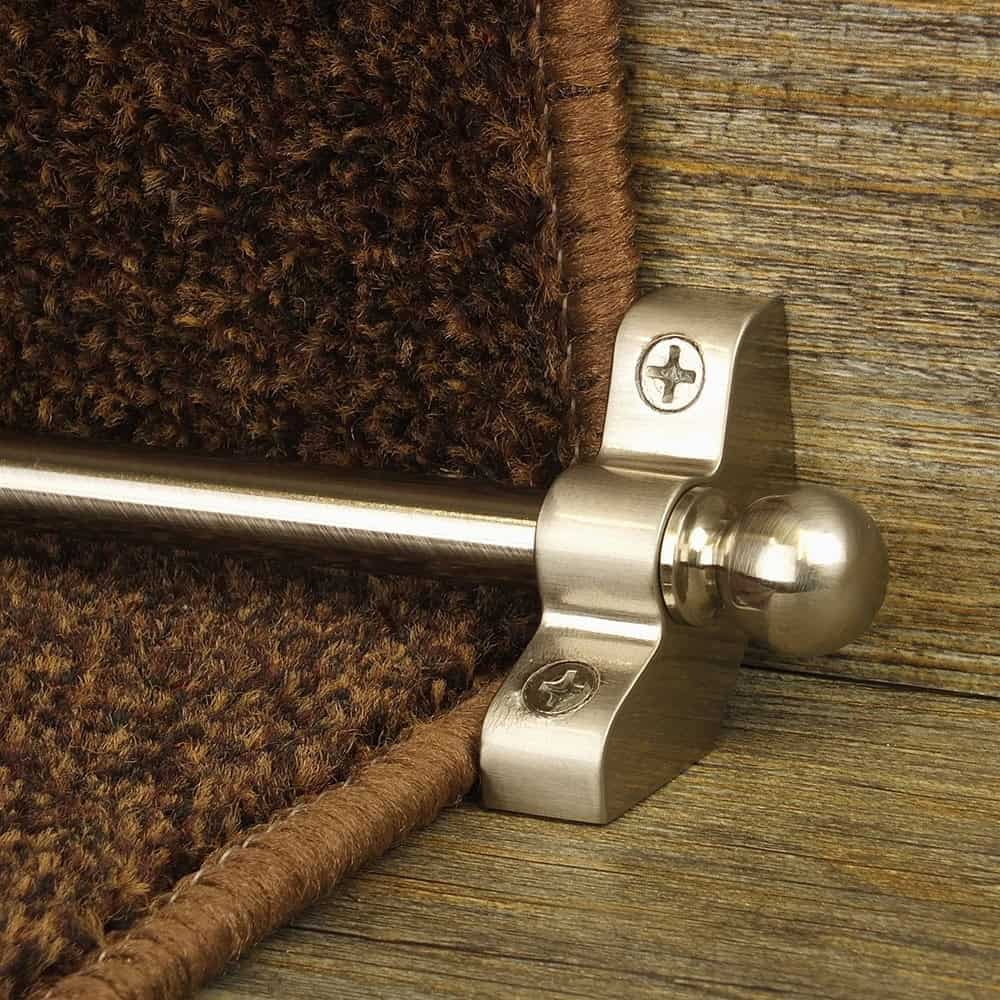
Before gripper rods, stair rods were originally used to hold carpets or cloth in place on staircases. They were invented in the 18th century and were commonplace in Victorian homes. Today, stair rods are experiencing a resurgence in popularity but are now mainly used for decorative purposes.
Stair rods come in three parts: the stylish metal bar that lies across each step (where the tread meets the riser), secured at either end by a bracket and two decorative end pieces called finials.
Whether your taste is traditional or modern, stair rods come in various designs, finishes and colours that will suit every staircase and decor.
Do you need stair rods for a runner?
While stair rods do add an extra layer of protection by keeping your runner firmly in place and preventing wear, you don’t have to install them.
However, they are without a doubt one of the easiest ways to add character and style to your home, particularly to your hallway or entrance area, giving visitors that showstopping impression as they step inside.
The benefits of stair rods
They complement your home décor
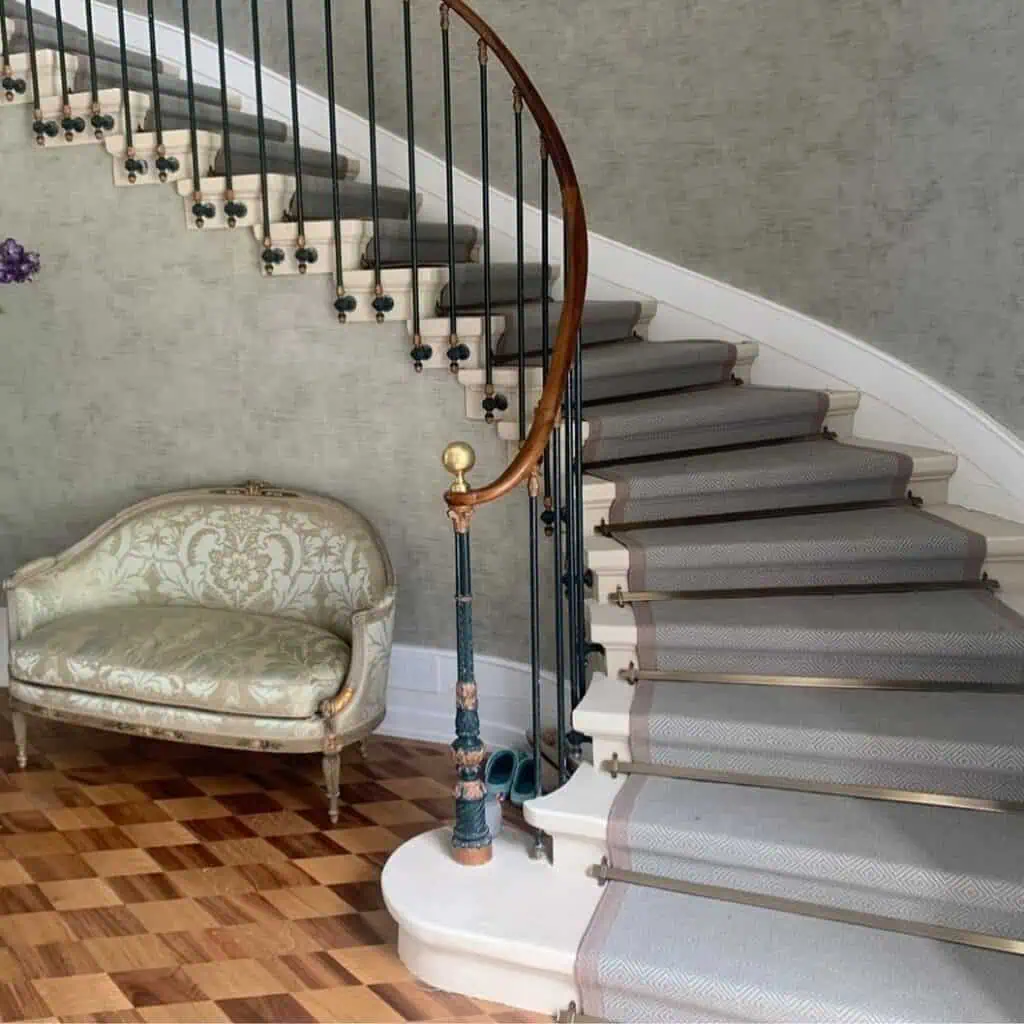
Stair rods come in a wide range of designs, finishes and colours – from minimalist to intricate, budget to premium – and are a great way of adding texture and intrigue to your home décor.
Here’s a rundown of the materials you can expect to find:
- Polished brass
- Satin brass
- Antique brass
- Antique bronze
- Polished chrome
- Brushed chrome
- Pewter
- Polished nickel
- Satin nickel
- Brushed nickel
- Stainless steel
- Aluminium
- Iron
- Wood
- Plastic
You can keep it simple with plainer designs or go dramatic with twisted rods and fancier finials – it all depends on your individual taste.
For example, if you’ve got brushed nickel light switches and plug sockets around your home, adding satin nickel stair rods will create a cohesive look. Or, if you’re in a period property with a fleur-de-lis theme – it makes sense to choose fancier stair rods with fleur-de-lis finials to up the elegance factor and tie it all together.
They protect your carpet (and feet)
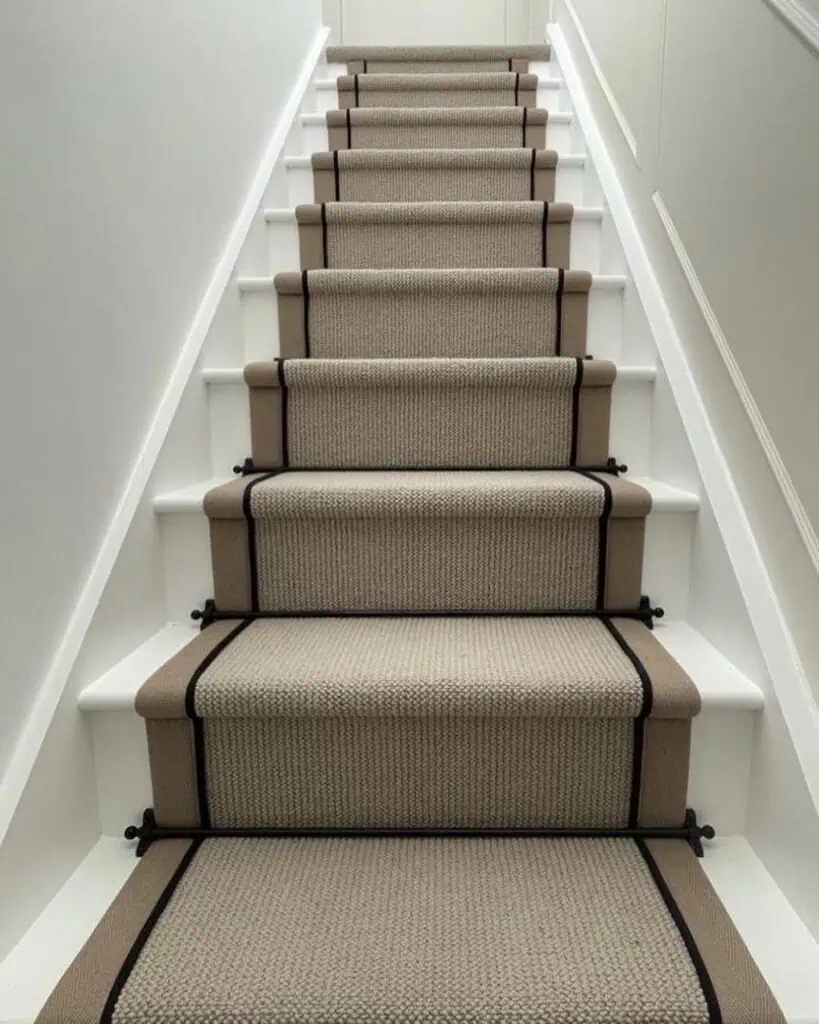
The popular carpet fitting technique of using gripper rods in the crease between stairs can cause those areas to wear out quicker than the rest of the step, especially in high-traffic homes. This could lead to you catching your heel on a gripper rod that has peeked through – especially if you have a low pile carpet or runner.
Stair rods can not only help prevent this, but they will also protect the carpet underneath, making it last longer.
They cover old damage or wear
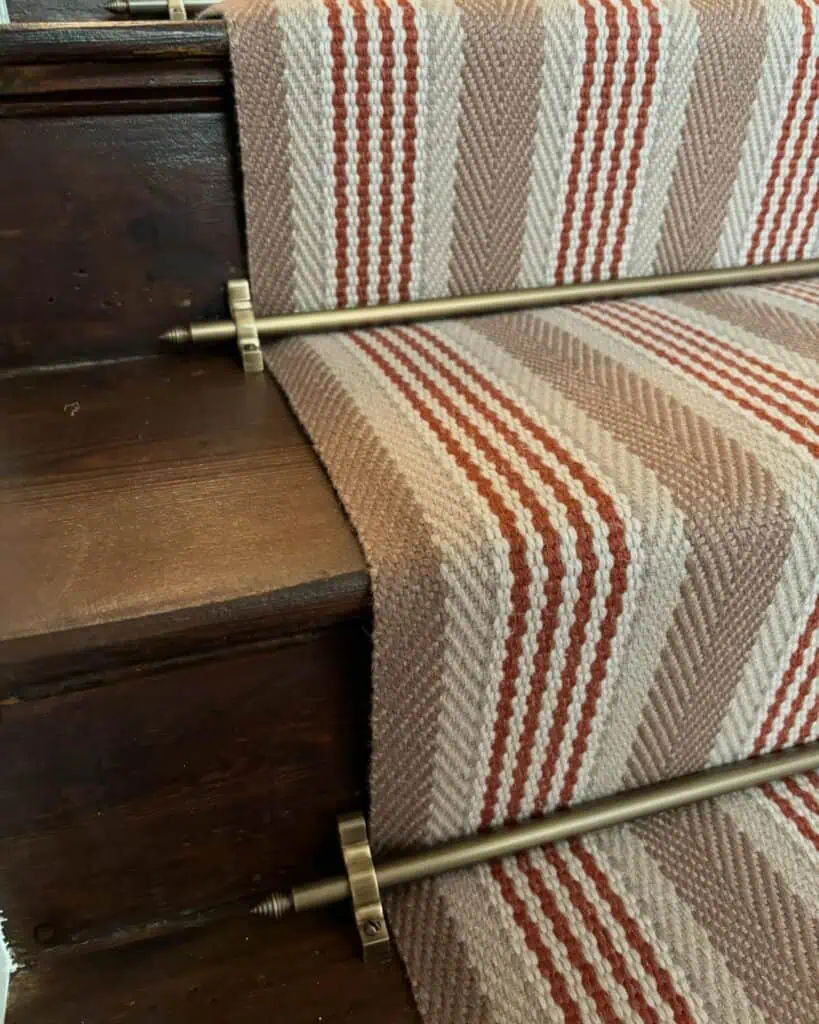
As explained above, the intersection between steps receives the brunt of foot traffic and wears faster than the rest of the carpet or runner.
If your stairs are otherwise in good condition, you could easily add stair rods to cover those worn areas and extend the life of your existing runner rather than replacing it.
PRO TIP: Stair rods do not need to be fitted at the same time as the carpet or runner. They can be retrofitted.
They are easy to install
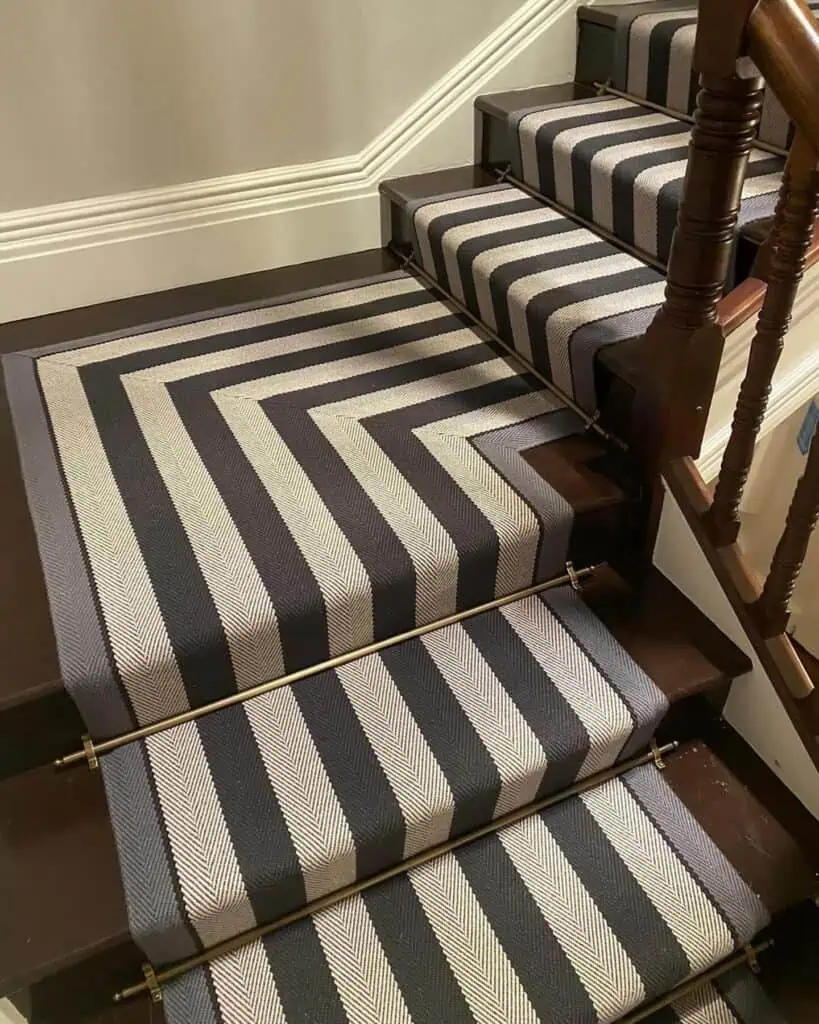
Despite their luxurious look, stair rods are surprisingly easy to attach yourself. All you’ll need is an awl for marking guide holes, screws and a drill to secure the brackets in place, and maybe a hacksaw.
Modern hollow tube stair rods (we sell these) come in various runner width sizes and can be easily cut to size with a standard hacksaw. To make life simpler, you can also buy adjustable or made-to-measure rods. Be prepared to pay for this convenience, though.
They cater for every budget
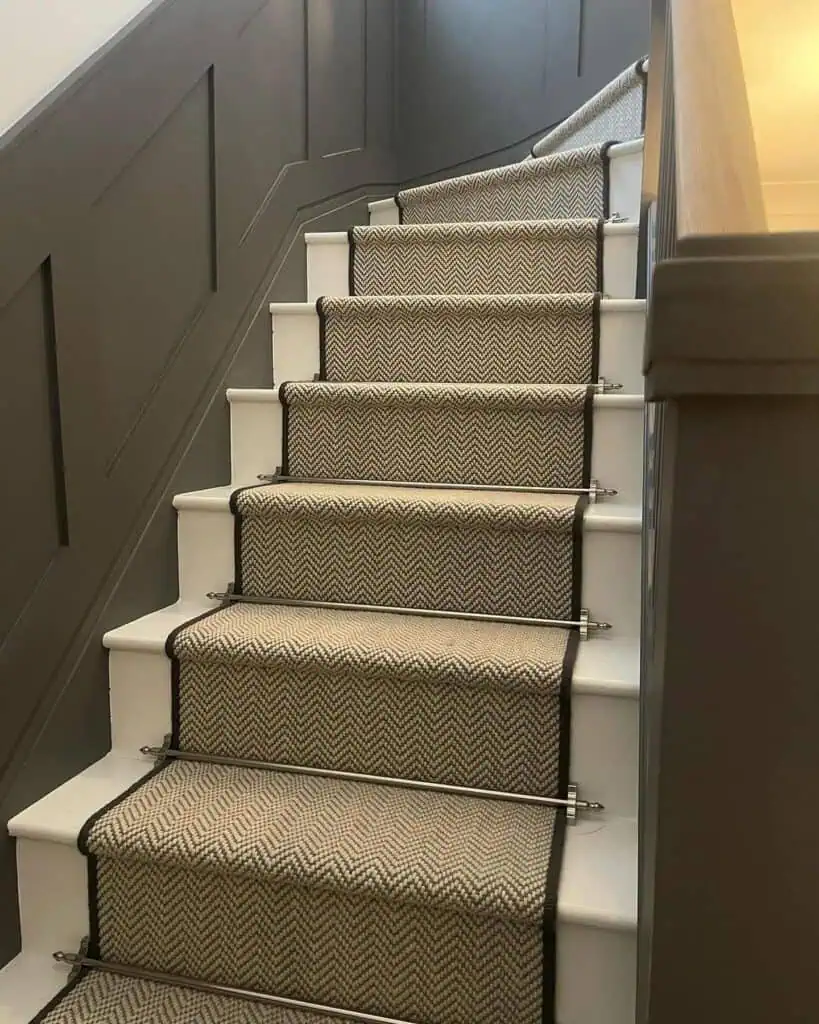
Due to their growing popularity, stair rods are now available in materials to suit all price brackets:
- Metal rods are extremely durable and most resistant to wear and tear. However, they’re often the most expensive option, especially for polished brass or stainless steel.
- Wood rods are mid-range price, although this depends on the type of wood and finish. They are durable but are prone to scratches and damage.
- While plastic rods are budget-friendly, they are also the least durable option and less visually appealing than metal and wood.
Clearly, there’s an option for every budget, but as with everything, you get what you pay for.
How to choose the right stair rod diameter
The diameter of stair rods influences both their look and performance. By choosing the right size for your staircase, you’ll not only keep your carpet runner secure but also achieve the most professional finish.
Here’s a diameter size guide to help you make the right choice:
Small (9mm): a budget-friendly option, but also a good option for a narrow staircase.
Medium (12mm): our recommendation for most domestic homes.
Large (16mm+): designed for deeper staircases, like those found in stately homes and hotels.
The perfect finishing touch
Even though stair rods aren’t compulsory when fitting a runner, they can prolong your carpet’s lifespan, cover signs of wear, and add a touch of glamour to your home.
Plus, with so many options, you’re sure to find the perfect match for your unique style.

